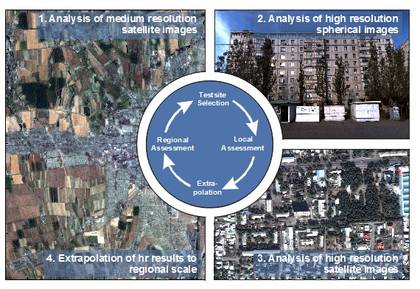Seismic Vulnerability
The high seismic risk level in Central Asia is not only dependent the high level of seismic hazard, but is also depends open the vulnerability of the buildings. A workshop held in Almaty (Kazakstan) on October 1996 [Khalturin and Tucker, 1997] on the “Strategies for urban earthquake risk management for the Central Asian Republics” pointed out that the seismic resistance of Soviet-era buildings was significantly lower than was officially proclaimed. Analyszing the devastating effects of the 1988 Armenian and 1995 Sakhalin earthquakes, the authors observed that “Millions of people in Central Asia live in the same types of buildings as those collapsed in Armenia and Sakhalin. If an earthquake of the same size occurs near one of the Central Asian capitals, the tragedies of Leninakan, Spitak, and Neftigorsk will be repeated on a much bigger scale, unless urgent measures are taken”.
Therefore, vulnerability data sets of different countries will be first harmonised, attempting a uniform re-classification of the building stock in terms of the EMS98 scale.
During the project, the possibility of developing a harmonized vulnerability classification scheme for Central Asia will be evaluated.

In order to provide an efficient approach that allows seismic risk monitoring, and considering the rapid growth of the main Central Asian urban areas, the use of remote sensing data and other imaging sources will be tested and applied. Such activities fully comply with the aim of the GEM Inventory Data Capture Tools (GEM-IDCT). A first test is ongoing in Bishkek and a new data acquisition campaign is planned for spring-summer 2011 in Dushanbe (Tajikistan).
GFZ coordinates this task.


